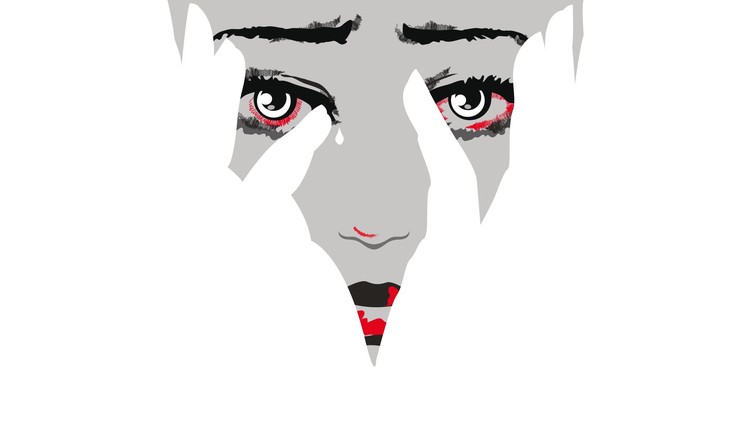When people are told they have “psychosis,” it’s usually because they are experiencing one or both of the following:
- “hallucinations,” defined as sensations that don’t seem to have any physical cause, and
- “delusions,” defined as beliefs that don’t agree with others in one’s culture and/or with physical reality.
Thanks to the revolutionary impact of the Hearing Voices Movement, many people around the world are now able to think of the experience of the first phenomena, “hallucinations,” as something much broader than just as part of a “psychosis.” In fact, even the term “hallucination” has been questioned, with less medicalized terms like “hearing voices” and “seeing visions” proposed instead. And it has been asserted that hearing voices itself should never be defined as an illness. Instead, hearing voices is conceptualized as a human variation, like being left handed or gay. It is understood that people may have problems with the voices and may need help figuring out how to relate to them, but once the relationship has been improved, the experience may change to something that is overall benign or even beneficial to the person.
Unfortunately, less attention has been brought to that other key component of psychosis, the “delusions.” And yet, the need for a revolution in how they are approached may be just as intense.
Sometimes, revolutions start with changes in understanding. One area to begin with might be the notion of a firm distinction between hallucinations and delusions. Hallucinations are understood as disorders of perception, while delusions are understood as disorders of conception: but in practice conception plays a big role in perception, and vice versa. For example, consider the difference between thinking that an external force is controlling one’s thoughts (classified as a delusion) and “hearing” thoughts that seem to be coming from outside one’s mind (classified as a hallucination.) Are these two really that different? Or are they better thought of as on a continuum, with some experiences in the middle and not easily classified as one or the other?
The history of the distinction between hallucinations and delusions is explored in the article Voices, Visions and ‘Persons Under the Floor’: ‘Delusions’ and ‘Hallucinations’ in Nineteenth-Century Psychiatry. It notes that the belief in a clear distinction between the two was not always present, and that our imagining that there is a clear distinction can make us insensitive to the lived reality of people’s experience.
In hearing voices groups, the lack of a clear distinction between perceiving a different reality, and conceptualizing or believing in a different reality, is often understood, and so alternative ways of relating to “unshared beliefs” have been developed alongside alternative ways of relating to voices. But these alternative approaches to working with troublesome beliefs have not received as much publicity as have approaches to hearing voices.
One example of a person working to change that is Rufus May. At age 18, Rufus became convinced that he was a spy and that a device had been planted in his chest. His beliefs were treated in the conventional way by the mental health system: he was diagnosed with “schizophrenia,” hospitalized, and drugged. But Rufus decided not to believe in the diagnosis and the drugs, and he eventually found his own way to regain control of his life. Then, using undercover skills which he had previously just fantasized, he infiltrated the mental health system, keeping his psychiatric history secret as he completed his training as a psychologist.
With his training complete, Rufus shifted to being open about his history, and became an effective advocate and educator for alternative approaches. And while some of his efforts have been around alternative approaches to hearing voices, he has also written very coherently about alternative approaches to working with difficult beliefs. for example in his article Accepting Alternative Realities. He also explored that topic in a recent webinar, Believe It or Not! Ways of Working with “Delusions” or “Unusual Beliefs” (See the link at the end of this post.)
One reason I believe Rufus is a great teacher on this topic is due to the degree of flexibility, creativity, and respect for people that he brings to the work.
A key issue with “delusions” is that people are often holding beliefs in a rigid manner: this tends to prompt those around the person to become unhelpfully rigid in return. In conventional mental health treatment, this rigidity involves insisting that the person “get insight” into the “fact” that their belief is a delusion and is a sign of the presence of a “mental illness” like “schizophrenia.” This rigidity is maintained despite evidence that many ideas about “schizophrenia” may be as untrue as any “delusion,” and despite extensive evidence that confronting any strongly held belief in a rigid way tends to make the person holding the belief dig in and defend it more.
I’ve been practicing CBT for psychosis for many years, and CBT does have some ways to approach “unshared beliefs” in a less rigid way. But there is still a tendency in much CBT literature to emphasize attempting to change the belief seen as troublesome. That is sometimes possible, and work around reconsidering beliefs can be important, but it is also sometimes not possible or not the most helpful approach.
In many cases, it can be more helpful to work on things like understanding the life experience that led to the belief, exploring the possibility of living successfully even while continuing to have the belief, and/or looking at the belief as a possibly metaphorical message about something that needs attention, and then shifting the focus to that area.
A couple years ago I had a chance to hear Aaron Beck, a key founder of CBT, speak about his understanding of how to approach apparent “delusions.” It may be common for older people to be rigid in their views, but I was pleased to find that Beck, then age 97, was advocating for a more creative direction. He was asked for example how he might respond to a man who was claiming to have been roasted in an oven. Beck said first he would acknowledge the man’s story, and be curious about what that experience was like, how it felt etc. Then he would ask about other times in the man’s life when he may have felt that way, and then inquire about whether anything currently was making him feel something similar. In other words, he was saying it might make more sense to follow the vein of emotional content to where it might connect with the man’s past or current issues and distress, which then could be addressed directly. That could be way more effective than simply trying to change beliefs.
Too often in conventional mental health treatment, once people express a belief that seems “insane,” there is just an effort to suppress the belief, rather than to really understand where the person might be coming from, and what their most important concerns might be.
Another example Beck gave involved a man who told hospital staff that his psychiatrist was a threat, and revealed that he wanted to shoot the psychiatrist. In a conventional setting, this would be seen as a sign of the worsening of a dangerous psychosis, and an increase in antipsychotic drugs, by force if necessary, would have been seen as the solution. But in this case, the psychiatrist had been trained to proceed with more sensitivity and flexibility, so instead of treating it as a symptom, he asked the patient, “why do you want to shoot me?” The patient responded, “because you are planning to shoot me!” “But,” the doctor explained, “I don’t even own a gun!” “Well,” said the patient, “you use your drugs like a gun.” The doctor thought about it and said, “I wonder if you are feeling you have very little control? That must be frustrating. But I know you must have lots you want to do outside of here and I want to help you get out so you can do that!” This made sense to the person and they started to work together.
In the hearing voices movement, it is often pointed out that the voices may be “poor communicators” and that working things out with them may require considering alternative interpretations of what they are saying, until a more constructive meaning emerges. For example, a voice that tells someone “you need to die” may be better understood as a part of the person saying that “something is wrong, you need to change something” or “you need to let something about you die.” Once the message is properly understood, it becomes something helpful rather than destructive. The voice hearer can learn to be like the parent who hears the child say “I hate you” but is able to infer that the child needs some love and a nap, rather than taking the statement literally.
One interesting thing about “delusions” is that people can be disturbed by their own beliefs: that is, they can find themselves falling into a belief, but sense there is something wrong with the it at the same time. At that point, they are like the voice hearer who hears a message that seems disturbing, but which they are also starting to believe.
A key skill people need to learn is discernment: sorting out what might be a valid message in the belief or in what the voice is saying, while dismissing what might be exaggeration or a too literal interpretation. This allows them to resolve the situation by believing the helpful part of the message, while disregarding the rest.
At other times people are not at all disturbed by their belief, but their having the belief does become disturbing to others. At that point, the person with the belief is, in relation to us, like the voice is in relation to the voice hearer. The person is saying something, and we must decide how to respond to it. Do we see them as the enemy, and someone whose views simply need to be suppressed? Or do we consider the possibility that while the person may be a poor communicator, there may be some valid message in what they are trying to communicate, even if we can’t agree with all of it?
To develop an adequate approach to difficult beliefs, it is also important to think more broadly about the nature and function of beliefs in general, and to understand how all humans tend to “behave irrationally” around their beliefs when those beliefs become important to their world view and their identity.
Beliefs are often a tribal kind of thing: people may believe something to fit in with others, not because of logic. Having a tendency to do so may benefit individuals in an evolutionary sense, because it makes the individual more likely to get along with others in their social group. (This works, of course, only when the belief is not so destructive as to lead to the extinction of the entire group: it remains to be seen for example how the “tribal belief” in the non-existence of the climate crisis, popular in many quarters, will affect the evolutionary viability of humanity.)
Curiously, psychiatry identifies only untrue beliefs held by one or at most a few people who are at odds with their culture as having mental health problems, and doesn’t consider the possibility that beliefs held by larger groups or even entire cultures may be even more of a problem – even though the dangerousness of a belief tends to increase the more people endorse it!
(If psychiatry were more able to recognize the “pathology” of widely held beliefs, it might for example be more able to reflect on the damage done by beliefs it has itself promoted, such as the one about how “mental disorders” are caused by “biochemical imbalances.”)
But, one might ask, if people often hold beliefs just to fit in with their group or tribe, why do some individuals seem to go their own way and choose beliefs that put them at odds with their community?
One answer may be that when a person’s life does not seem to them to be working out, they may be motivated to try on different beliefs, sometimes desperately grabbing on to whatever seems to offer some chance at inner coherence amid chaos and disruption. Once a belief that seem to help restore internal order is found, the person may be reluctant to let go of it, even when that puts them at odds with their culture and gets them labeled “psychotic.”
It is also true that evolution would never work if there were not genetic variations, and cultural beliefs can never evolve unless we have people trying on different perspectives. Much variation in belief may be just a part of human diversity, and not a problem that needs to be solved. A skilled approach to working with beliefs involves both toleration of differences in perspective, with an awareness of a variety of possible things that can be tried when a belief is causing problems that do not seem to be tolerable, either to the person or to others with whom they must interact.
There’s a lot more that could be said about this topic: this post just scratches the surface. To go a little deeper into it, consider viewing the “Believe It or Not” webinar:
Topics covered include
- understanding the protective function of beliefs,
- understanding how they may be linked to past life events,
- ways to be with someone with different beliefs, and
- if someone is motivated to hold their beliefs more lightly how we might help them with this.



